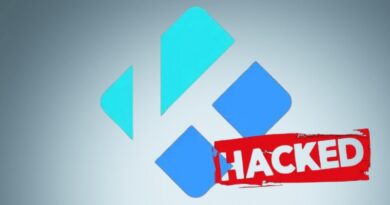Spark Bitcoin Layer 2 by Lightspark Officially Launches on Mainnet
Lightspark Launches Spark: A New Bitcoin Layer 2 Network Goes Live
Bitcoin just got a major boost. Lightspark, a company focused on improving Bitcoin’s infrastructure, has officially launched Spark—a new Layer 2 solution—on the mainnet. If you’ve ever waited for a slow Bitcoin transaction or paid high fees, Spark could be the game-changer we’ve been waiting for.
So, what is Spark, and why should you care? Let’s break it down.
What Is Spark and Why Does It Matter?
Think of Spark as an upgrade layer that sits on top of the Bitcoin network. While Bitcoin is great for being secure and decentralized, it’s not always fast or cheap to use. Spark helps solve that by making Bitcoin transactions faster and more affordable.
Spark is built on top of the Lightning Network, a technology designed to speed up Bitcoin transactions. But it takes things a step further. Lightspark has added features that make the system more reliable, easier to use, and friendly for businesses.
Here’s how Spark improves the Bitcoin experience:
- Faster payments – Transactions settle almost instantly.
- Lower fees – You pay a fraction of the cost that traditional Bitcoin transactions require.
- Better reliability – The system finds multiple routes for your payment, which means you’re less likely to experience failed transactions.
What Makes Spark Different from the Lightning Network?
You might be wondering: isn’t Lightning already doing this? Yes, but Spark isn’t just Lightning with a new name. It’s an upgraded experience, much like how mobile internet improved after going from 3G to 5G.
One key difference is a protocol called PTLC (Point Time-Locked Contracts). Most Lightning networks still use HTLCs (Hashed Time-Locked Contracts), which can be limiting. PTLCs offer more privacy and flexibility, making payments smoother and more secure.
Here’s what sets PTLCs apart:
- More privacy – Your transactions reveal less information about you.
- Greater flexibility – PTLCs can handle a broader range of payment types.
- Reduced failure rates – Transactions are more likely to go through, even on busy networks.
Lightspark’s Vision for Bitcoin
Spark isn’t just about making Bitcoin faster. It’s part of Lightspark’s larger goal to make Bitcoin practical for everyday use—not just as an investment or store of value.
David Marcus, the CEO of Lightspark (and former head of Facebook’s crypto project), has been clear about this. He wants to make Bitcoin the internet’s native money. That means being able to use it as easily as sending a text message. Spark is a major step in that direction.
Key design goals behind Spark include:
- Efficiency – Spark uses bandwidth and battery wisely, making it suitable for mobile devices.
- Compliance-ready – It’s built in a way that businesses can meet regulatory rules.
- Scalability – The system is designed to support high volumes of traffic without breaking.
Who Is Spark Built For?
You don’t need to be a tech expert or developer to benefit from Spark. It’s designed for everyone—from average users to large companies who want to use Bitcoin in their apps or platforms.
Here are a few use cases:
- Developers – Build apps that send payments instantly across borders.
- Businesses – Accept Bitcoin with low transaction costs and global reach.
- Everyday users – Send Bitcoin to friends without worrying about delays or extra fees.
Spark Daemon and Tools for Developers
To make things easier for programmers and engineers, Lightspark has also released a developer kit called the Spark Daemon. This tool makes it easy to plug Bitcoin payments into websites, apps, and mobile devices.
Here’s what the Spark Daemon offers:
- Easy setup – Run the daemon locally or in the cloud.
- Open-source SDK – Build custom UIs and features with full control.
- Multi-platform support – Compatible with Web, iOS, Android, and backend environments.
If you’re a developer, this means it’s never been easier to start using Bitcoin in your apps.
Why Lightning Payments Still Matter
Despite all the buzz about new technologies and Layer 2 solutions like Ethereum’s rollups, Bitcoin isn’t sitting still. The Lightning Network (and now, Spark) keeps pushing the boundaries, making Bitcoin a realistic option for micro-transactions and everyday payments.
By upgrading the Lightning experience, Spark helps Bitcoin stay competitive in a market full of alternatives. Now, things like buying coffee with Bitcoin or sending small tips online feel more realistic.
Security, Sovereignty, and Compliance
One of the interesting things about Spark is its balance between user control and legal compliance. If you’re someone who cares about privacy and owning your own money, Spark lets you generate your own Bitcoin keys. That means you don’t have to trust anyone else to hold your funds.
At the same time, Spark is built in a way that businesses can layer in compliance rules when required. That’s important for big players like banks or global apps that want to offer Bitcoin services without breaking laws.
So whether you care about freedom or functionality, Spark has options that suit both sides.
Getting Started: How to Use Spark
Ready to jump in? The Spark software is live on mainnet, and anyone can start exploring it. If you’re not a developer, you’ll likely see Spark show up in wallets and apps you already use as adoption grows.
For developers and companies, all the tools are already available. You can visit Lightspark’s website or GitHub to get access to:
- Spark SDKs
- Tutorials and documentation
- Technical support from the Lightspark team
Final Thoughts: Is Spark The Future of Bitcoin Payments?
Bitcoin has often been called digital gold—but spending gold has never been easy. With the launch of Spark, the Bitcoin network takes a big step toward becoming a faster, cheaper, and more user-friendly payment system.
If you’ve ever thought Bitcoin was too slow or too expensive, Spark might change your mind. It brings us closer to a future where sending Bitcoin is as easy—and as instant—as sending a text message.
So what do you think? Would you consider using Bitcoin more if it were faster and less expensive? Spark might be your answer.








